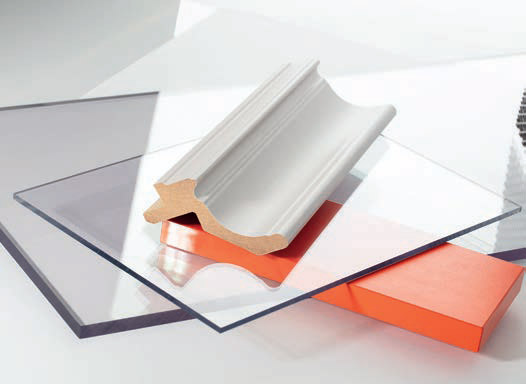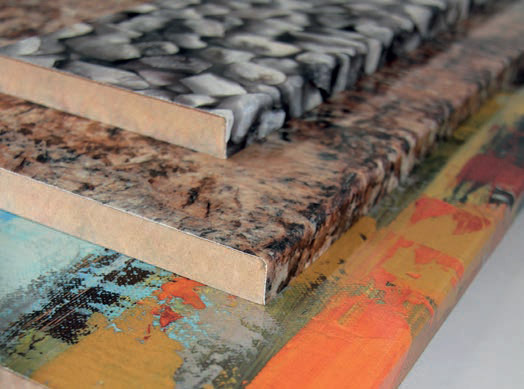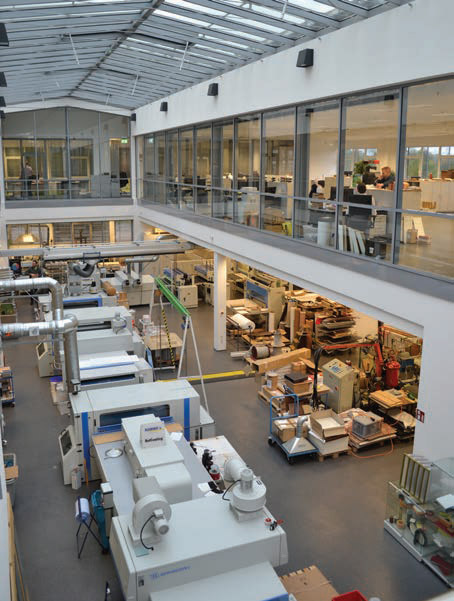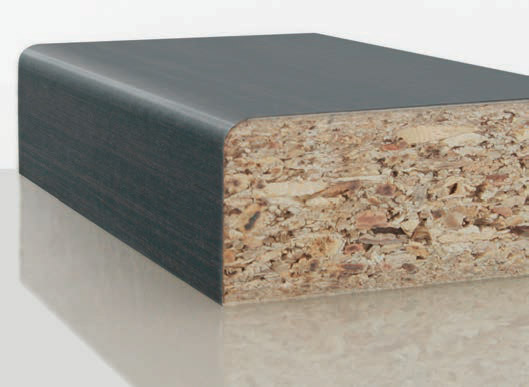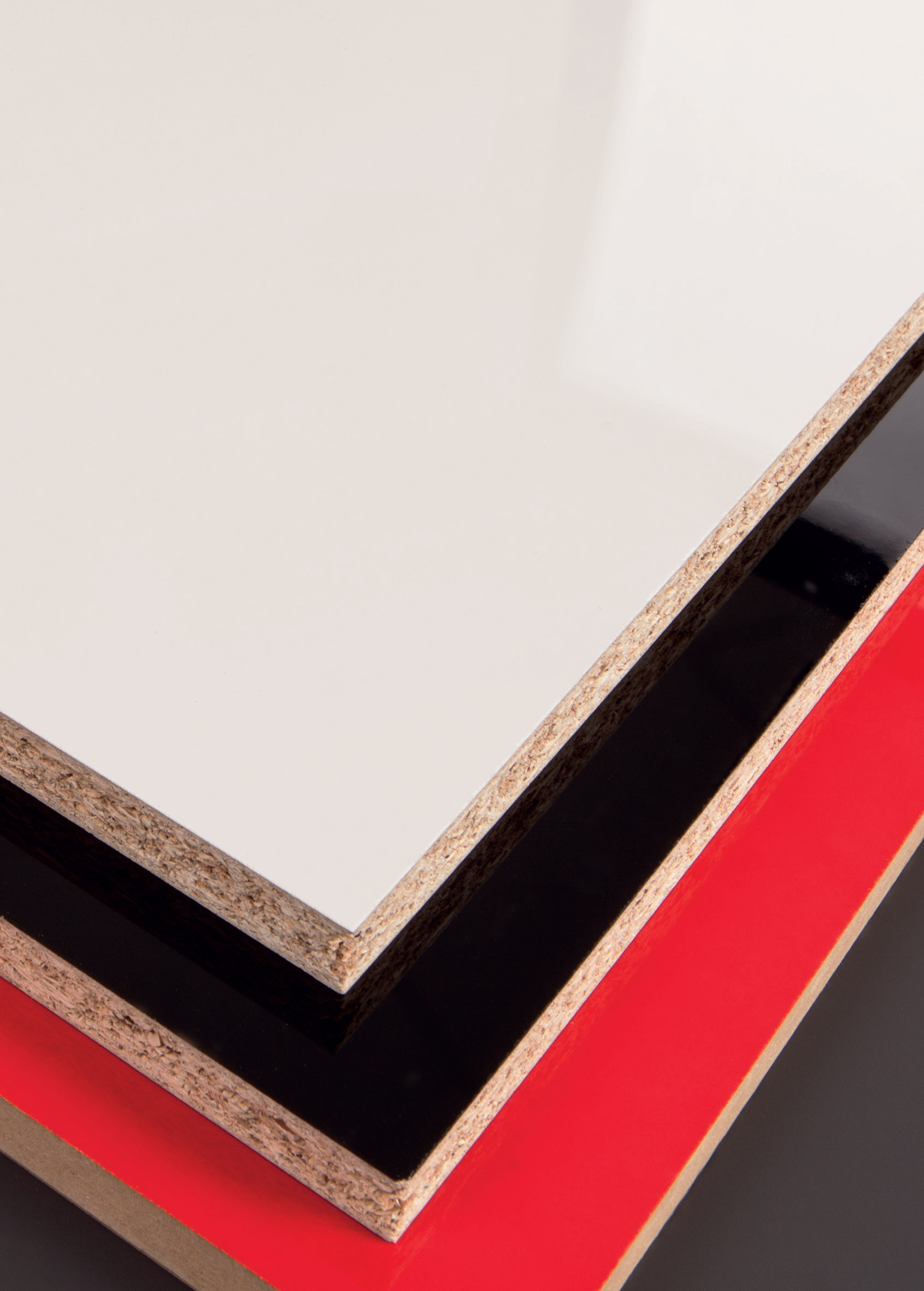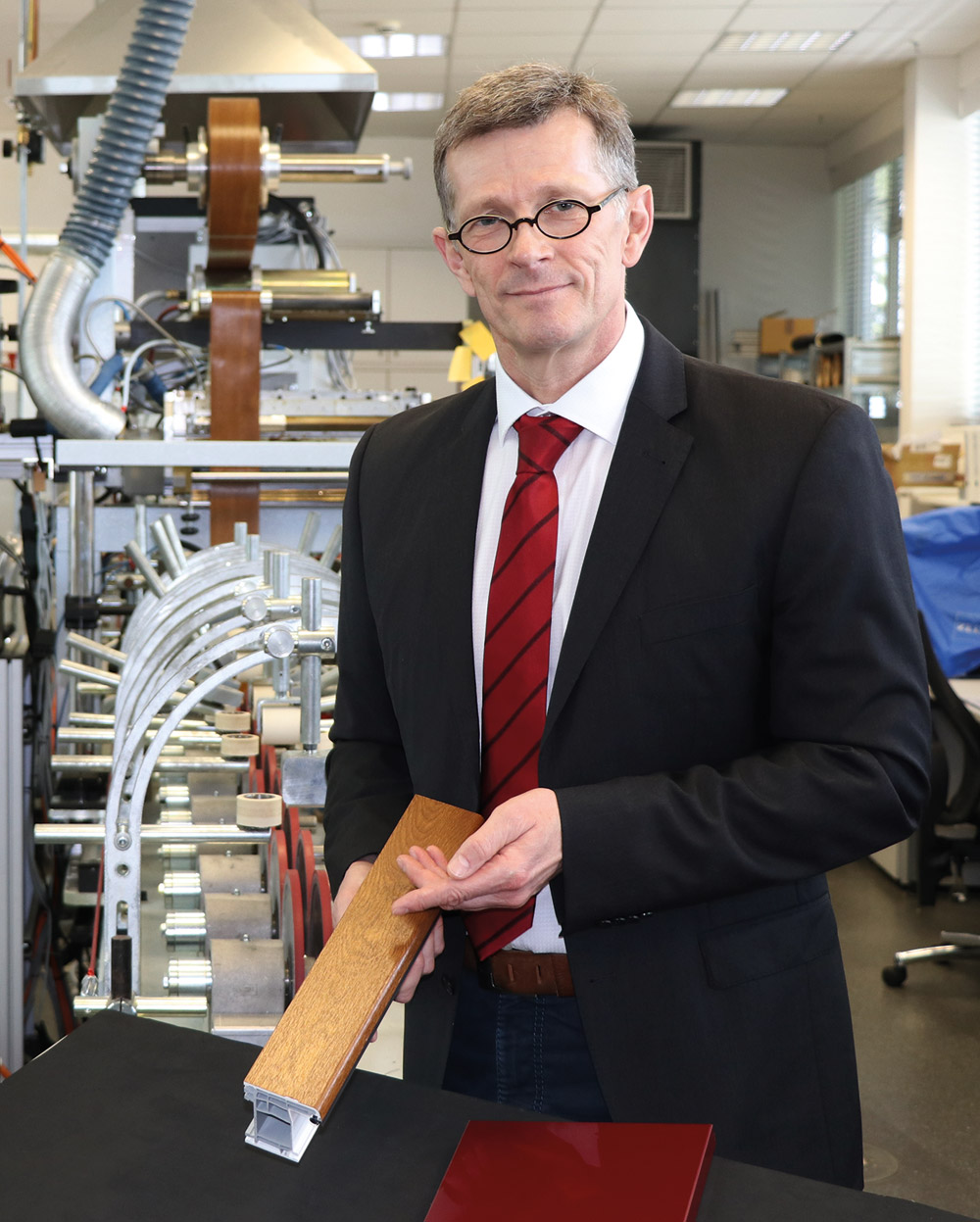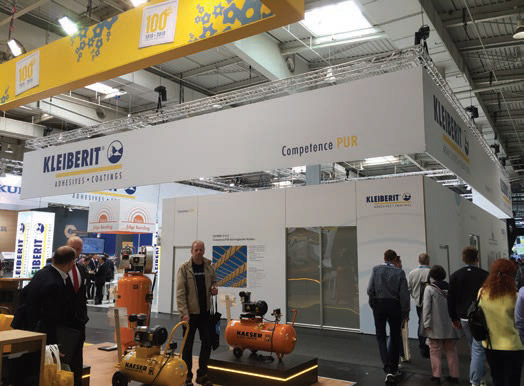Lowering Emissions
30 January 2020This year our Focus on Germany trip started off with a journey to coatings and adhesives manufacturer Kleiberit. Stephen Powney reports
Arriving at the headquarters of global adhesives and coatings specialist Kleiberit for WBPI’s Focus on Germany visit, it was clear that there has been a lot of recent activity at the firm.
The Weingarten site near Karlsruhe in Baden-Württemberg manufactures 100% of Kleiberit’s production – which equates to 70,000 tonnes annually, with 480 of the company’s 640 worldwide staff employed on this site.
Only 12 months previously it had been Kleiberit’s 70th anniversary but it is certainly not resting on its laurels – construction work is commencing here on site to expand the growing HotCoatings business, while a successful Ligna exhibition brought high levels of focus on the company’s micro emission (ME) adhesives.
The company, whose exports account for up to 85% of its turnover annually, is a specialist in reactive PUR hot melt adhesives.
It is active on every continent and in many industrial sectors, reporting an increasing presence in the automobile and textile industries, while also having a strong presence in bookbinding and wood products.
Kleiberit marketing-communication manager Peter Mansky and head of technology centre Holger Scherrenbacher pinpointed micro emissions and HotCoating as two big focus points in its wood related business.
Micro Emission Pur (Polyurethane Reactive) Adhesives
The increasing trend towards more environmentally-friendly and safer products has led to heightened interest in ME adhesives.
For the first time at the Ligna exhibition, Kleiberit presented an extensive range of ME PUR adhesives in various theme-based displays and different application solutions, such as for profile wrapping, edgebanding, flat lamination, and complete-line process.
The ME product itself was launched by Kleiberit at the 2015 edition of the show. “At Ligna we saw that the market is open for this product,” said Mr Mansky.
“Environmental things are very much in focus and we could show that we already have answers on this. It brought a lot of attention to us at Ligna, with lots of visitors asking questions about micro emissions.”
Mr Scherrenbacher explained that the low emission nature of ME adhesives was that they were much safer for production staff.
Micro emission products are not new in themselves – they have been around for many years but those earlier generation products, said Mr Mansky, lacked bonding quality performance. Today’s version is a much higher performance product, with edgebanding being one of the primary applications.
They contain less than 0.1% isocyanate monomer, which drastically reduces harmful isocyanate vapours. The high extraction of monomes required for ME means Kleiberit has to add an extra demonomisation step in the production process.
Kleiberit believes legislation against certain ingredients such as isocyanate is likely in the future and the company is thus future-proofing itself for when this happens.
Users of ethylene vinyl acetate (EVA) adhesives are obviously one target for the ME adhesives
“This technology is available and functional now,” said Mr Mansky. “To move from A to B is up to them. But they know that a ‘Plan B’ is available. The sales figures have been going up since Ligna 2015.”
Kleiberit already has a broad range of ME solutions, with specific grades of micro emission being offered.
For profile wrapping for interior use 702.5.03 ME is characterised by high green strength, temperature resistance of up to +140C and down to -40C. Aside from the lower emission benefits, quoted advantages are safe and easy handling and no labelling requirements.
Two PUR hotmelt adhesives – 707.9.03 ME and 707.9.38 ME – are available for edgebanding where the environment is humid or if the furniture comes into contact with moisture.
For flat lamination applications, five ME hotmelt adhesives are available for use with films, veneers or papers on thermal and cold lamination lines. Benefits include long open times, high green strength and high final strength.
For customers requiring new machinery to use reactive adhesives, Mr Scherrenbacher said it could be a high investment, but many companies would be able to use existing equipment.
“I am sure this message on micro emissions will find its way to the end-user,” added Mr Mansky. “We want to change all PU hot melts into micro emissions, which will be on the safe side and will help secure adhesives production, while also being profitable.”
Hotcoating
Kleiberit’s patented HotCoating technology is a big success story, with about 65-70 companies to date investing in the system worldwide and a 40% growth in sales over the last two years alone.
A new building is currently being constructed at Weingarten for the further expansion of HotCoating production. “We have been forced to do this because of the demand for HotCoating,” added Mr Mansky.
HotCoating is being used for the finishing of furniture components, flooring and façade elements, as well as the finishing of roll material for profile wrapping. High Gloss and Super Matte finishes have become very popular.
Pfleiderer invested €12m in a HotCoating line in 2018. With a length of 165m, the new line at Leutkirch is the largest HotCoating plant in the world and applies multi-layer UV-cured acrylic lacquer to wood-based materials.
The new plant allows for High Gloss and Super Matte lacquering of particleboard and MDF in the format 2,800mm x 2,100mm. The lacquered surfaces will be used mainly for high-quality kitchen fronts as well as in high-end interior design.
Pfleiderer’s HotCoating line matches its DecoBoard and Duropal HPL products so that customers can get HPL, direct laminated and lacquered surfaces in matching decors from a single source. Its lacquered HPL Compact boards with their matt, weather-proof surfaces are also suitable for outdoor use, with applications including balconies, outdoor furniture and playgrounds.
Other panel producers who have invested in HotCoating include Kastamonu in Turkey and Duratex in Brazil, while Kleiberit also reported two new customers in India. The company is getting very close to receiving orders in the Chinese market.
The High Gloss finish is popular for its aesthetics and wear-resistance, whereas SuperMatte does not show fingerprints and is easy to clean. High Gloss has also the advantage of lending plain decors a particular colour depth and mirror shine.
At the Ligna exhibition, three HotCoating lines ran continuously so visitors could experience surface finishing under real conditions. These were an inline digital printing line that can print inline and subsequently hot coat in a single pass; a Compact-Line, where transparent High Gloss films were bonded with a PUR hotmelt developed specifically for the process; and a classic HotCoating line producing High Gloss and Super Matte finishes.
“What we were seeing five years ago with High Gloss in Europe we are now seeing in the Eastern part of the world,” said Mr Mansky.
He said Turkey is taking great interest in the Super Matte product. High gloss, he added, was still very popular and people still want to use it. Customers in Asian markers know it is being used in Europe and want to copy the trend.
In the future, Kleiberit says it will be possible to coat materials with widths up to 1.5m wide, giving users new possibilities in high quality wrapping of components, such as doors.
“The most critical point is for the customer to invest in the production line, ” said Mr Scherrenbacher. “Customers sometimes approach it from a lacquer point of view. “The only obstacle is machinery as it is a whole new process of doing things. But when you compare a HotCoating line with a lacquer machine it is much smaller.”
HotCoating’s 100% solid content, with no solvent or water means far less material is wasted compared to conventional lacquering and there is the added bonus of no sanding required. Curved products are also possible in shapes where conventional coatings would break.
For the future Kleiberit is looking at working with bio-based material substrates, such as coconut shells, bamboo and paper-based panels. It is also looking at other technologies to make adhesives.
“But we like PUR, it will be the future for a period of time,” added Mr Scherrenbacher.
